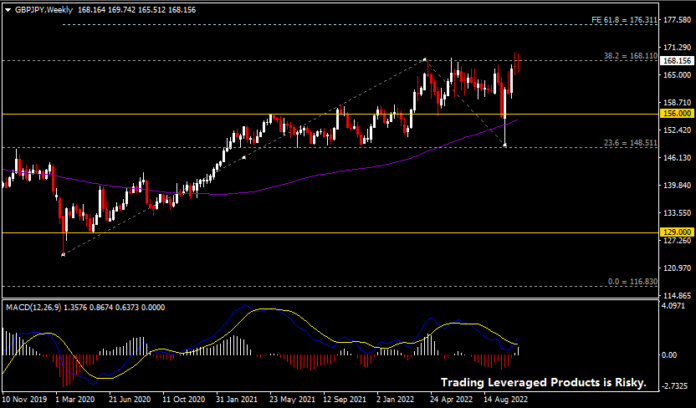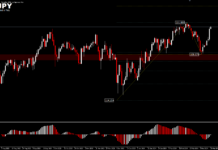Bond yields in the UK plunged after the country welcomed a new Prime Minister, Rishi Sunak. Data showed that the UK 1-year, 2-year, 5-year, 10-year and 30-year yields fell the most during the day, by over 30 basis points.
Figure 1: UK government bonds and yields. Source: Trading Economics
The UK economy may inevitably slip into recession. The latest data showed that the UK manufacturing PMI registered 45.8 in October, a new low since May 2020, while the services PMI registered 47.5, a new low since January 2020. The data also showed that confidence in these businesses has fallen to a 2.5-year low, driven by political uncertainty and concerns over deteriorating growth prospects.
Figure 2: UK manufacturing and services PMI. source: Trading Economics
Poor economic data and a bond yield storm prompted the Pound to resume its slump against the US Dollar from a higher opening in the Asian session to the close of trading. By the close, the pair was under pressure below the previous 1 day close at 1.1276. Today Bank of England chief economist Peel will speak. Earlier this month, Peel hinted at the possibility of a “significant” response from the central bank, but this came while Truss was still in power (when she promised a massive tax cut and spending stimulus package). Now that Trussonomics has written its final chapter, Bank of England Deputy Governor Ben Broadbent recently said that “it remains to be seen whether interest rates rise as sharply as the market expects”.
Figure 3: Japan’s foreign exchange reserves. Source:Trading Economics
On the other hand, the Bank of Japan’s efforts to maintain an ultra-loose monetary policy have led to the Yen’s real effective exchange rate falling to its lowest level since September 1970. Although Finance Minister Shunichi Suzuki has recently indicated that the government will intervene in foreign exchange, what we have seen is that the authorities seem to be inclined to intervene covertly (i.e. without explicitly stating when they will intervene). In this regard, economist Jun Takeda believes that this could be a psychological strategy to limit the frequency of actual intervention by “giving the market the illusion of seemingly frequent interventions ……”. After all, a large intervention would mean a large sale of Dollars (thus boosting the Yen), and the Japanese authorities have limited foreign reserves (last month, the government made its first currency intervention in 24 years, and Japan’s foreign reserves then fell to a record $1.238 trillion).
Technical analysis
From a technical point of view, GBPJPY is currently testing key resistance at 168 (or FR 38.2% from the July 2007 peak to the September 2011 low). A break of this resistance would provide more boost to the bulls to extend upwards and test the next resistance at 176 as well as 184 (the latter is at FR 50.0%, and a break of this level would probably consolidate the longer-term bullish direction). On the other hand, if the currency pair fails to break out and retraces in the near term, near term support is on the horizon at 156, which forms an intersection with the 100-week SMA. A break below this support would drive more short pressure and the exchange rate could test the next key support at 148.50.
Click here to access our Economic Calendar
Larince Zhang
Disclaimer: This material is provided as a general marketing communication for information purposes only and does not constitute an independent investment research. Nothing in this communication contains, or should be considered as containing, an investment advice or an investment recommendation or a solicitation for the purpose of buying or selling of any financial instrument. All information provided is gathered from reputable sources and any information containing an indication of past performance is not a guarantee or reliable indicator of future performance. Users acknowledge that any investment in Leveraged Products is characterized by a certain degree of uncertainty and that any investment of this nature involves a high level of risk for which the users are solely responsible and liable. We assume no liability for any loss arising from any investment made based on the information provided in this communication. This communication must not be reproduced or further distributed without our prior written permission.























